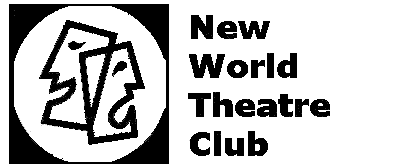A New World Theatre Club production.
Lighting by Anthony McCarthy & John Brigg.
Make-Up by Collette McCormack & Christine Probst.
Performed 24th November 2007 at T’Schier, Aspelt, Luxembourg.
Have you ever thought about helping out backstage at the theatre?
This was a chance to learn some of the skills that the NWTC needs.
The lighting workshop lasted from 10 a.m. to 4 p.m. and was led by John Brigg and Anthony McCarthy.
The make-up session ran from 2 to 4 p.m. and was led by Colette McCormack and Christine Probst.
Both workshops were open to anyone over 16 and were free of charge. We were getting the room free, so you were expected to have lunch at the restaurant (choice of three menus, including a vegetarian option).
THE REVIEW by Alison Kelly
Lighting
Perched on a circle of stools, in a great barn of a room in Aspelt, some 20 people nervously introduced themselves and explained why they wanted to attend a workshop about theatre lighting. Most were teenagers who were either studying drama at school or involved in lighting school productions, but there was a smattering of both older and younger people.
John Brigg started the workshop by illustrating the importance of lighting.
If you close your eyes and then open them again, what do you immediately notice? The brightest object in the room. But if a lesser light moves, your eye naturally follows that. By shining torches in each other’s faces, we explored the interesting effects of shadows, and the way a bright, direct light can wash out the features. The contrast gives form, and the shadows show us the shape of the object. And of course, shining light of one colour on fabrics of another colour can produce some unexpected and dramatic effects. In the theatre, light is used to focus attention and to create mood. Changes in the light not only keep the audience’s interest, but direct that interest to particular points on stage. This is the art of the lighting director.
After a break for a late breakfast (kindly provided by Angela Milne, via the local patisserie), Anthony McCarthy introduced us to the craft of the lighting director. He showed us the main sorts of theatre light and invited us to try our hand at adjusting them. Whereas the plano-convex light has soft edges so that several beams can easily be merged, the profile lights are often used for highlighting and creating special effects. They have a special effect themselves, in that the gates are reversed, so that to move the light up (or left) you have to move the gate down (or right)? all very confusing for the uninitiated. At present there are no low-energy theatre lights, so the apparatus gets very hot and difficult to handle.
John and Anthony also pointed out the importance of knowing exactly what sort of electricity supply the venue has and being careful not to overload it! The lighting director has to be both an artist and a scientist, able to calculate the requirements of particular combinations of lights correctly. It’s also important to bring all the correct plugs, adaptors and cables with you, a point that was graphically brought home later in the day, when a search party had to be sent out for a 16/32-amp adaptor!
After lunch, the lighting workshop moved on to more practical matters. We worked on lighting the scene where the ghost of the murdered Banquo appears to Macbeth at a banquet. In addition to background lighting, the ghost and Macbeth need to stand out, and so does Lady Macbeth’s face.
The light has to follow Macbeth as he moves around, and all this provided us with quite a challenge. We had to learn how to load the lighting bars and keep them balanced, as well as how to extend the light stands and make sure the cables were hanging correctly and the barn doors on the lights weren’t obscuring other lights. All of this takes considerable time and skill. In a real production up to 20 lights may need to be set up and focused in an hour.
In the end all the lights are connected to a lighting box, so that central control during the play is ‘simply’ a matter of pushing the knobs up and down at the right time. Even this is largely hidden from the audience (and indeed the actors), most of whom never realise how skilled the essential job of lighting a production is, how much advance planning it takes, and how important calm and fast reactions on the night are.
But at least 20 people can now appreciate this crucial aspect of theatre better.
